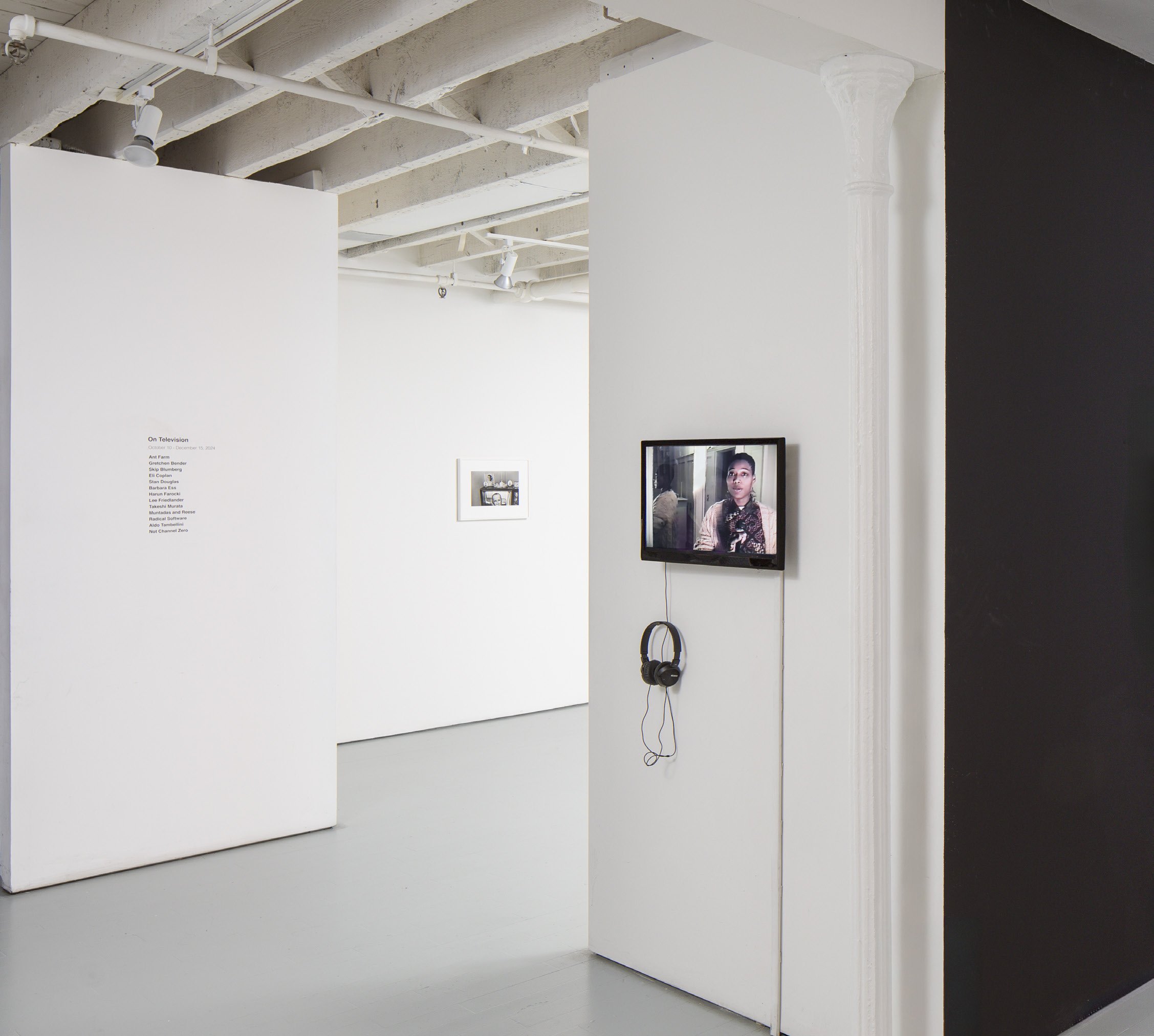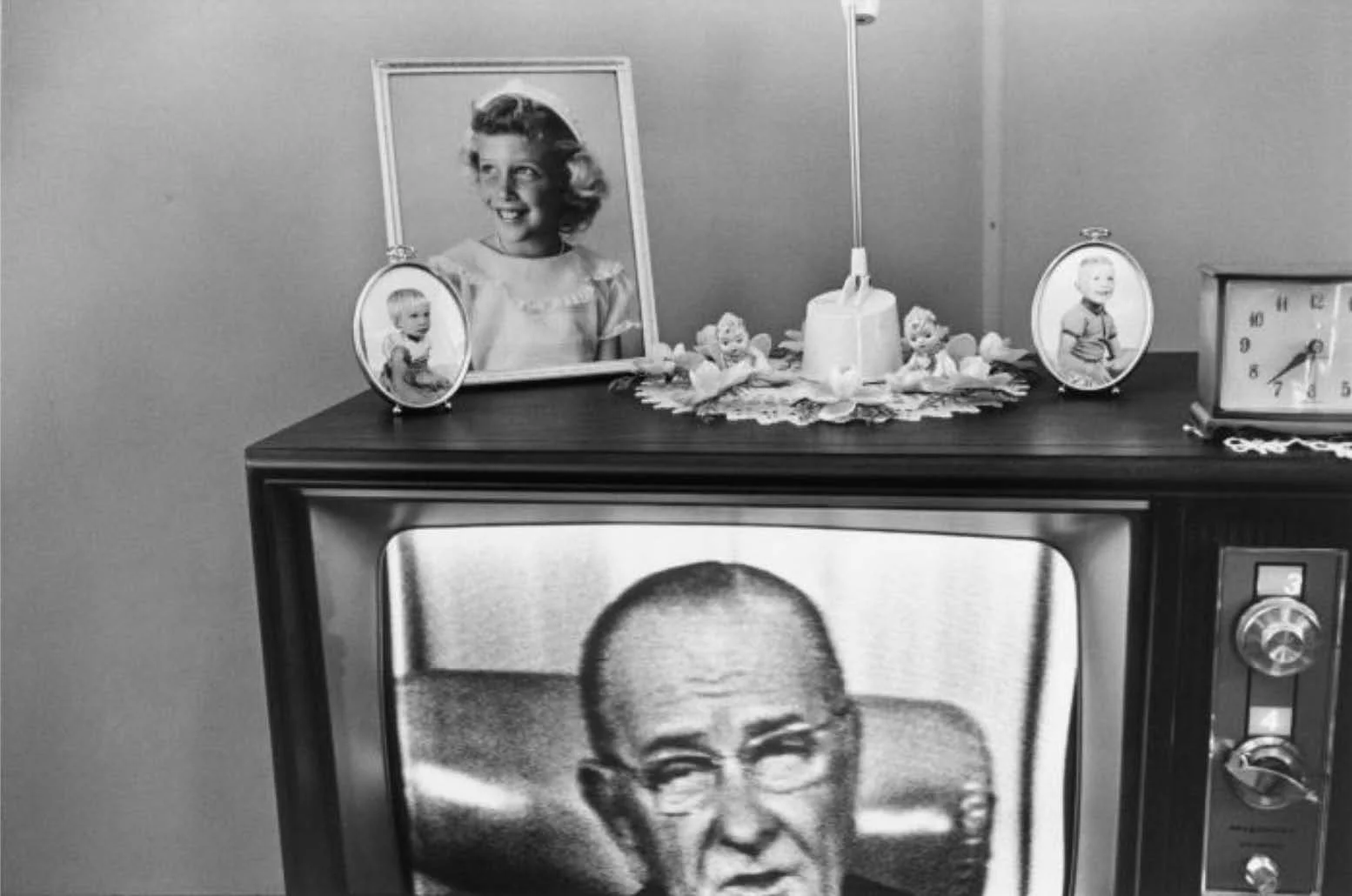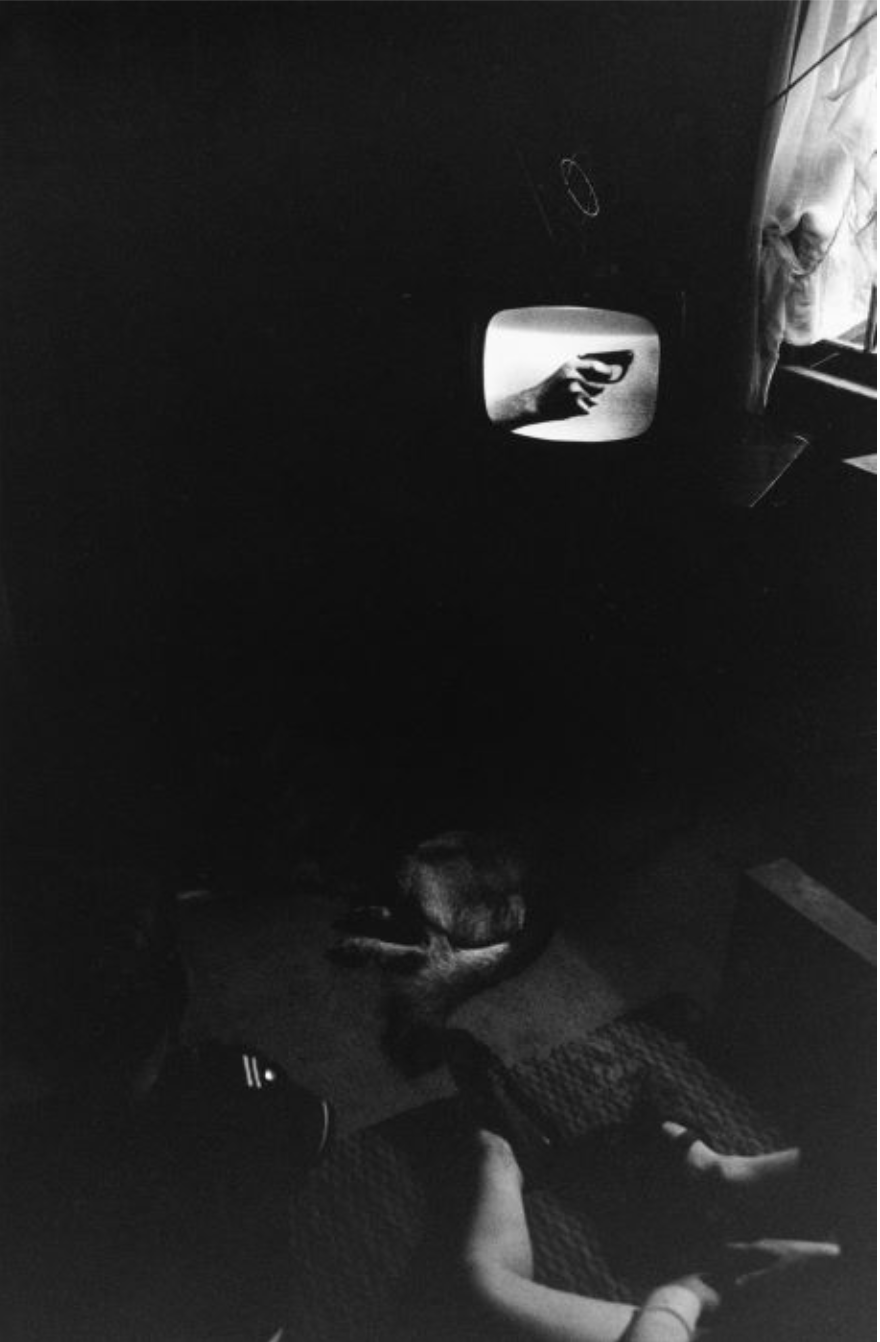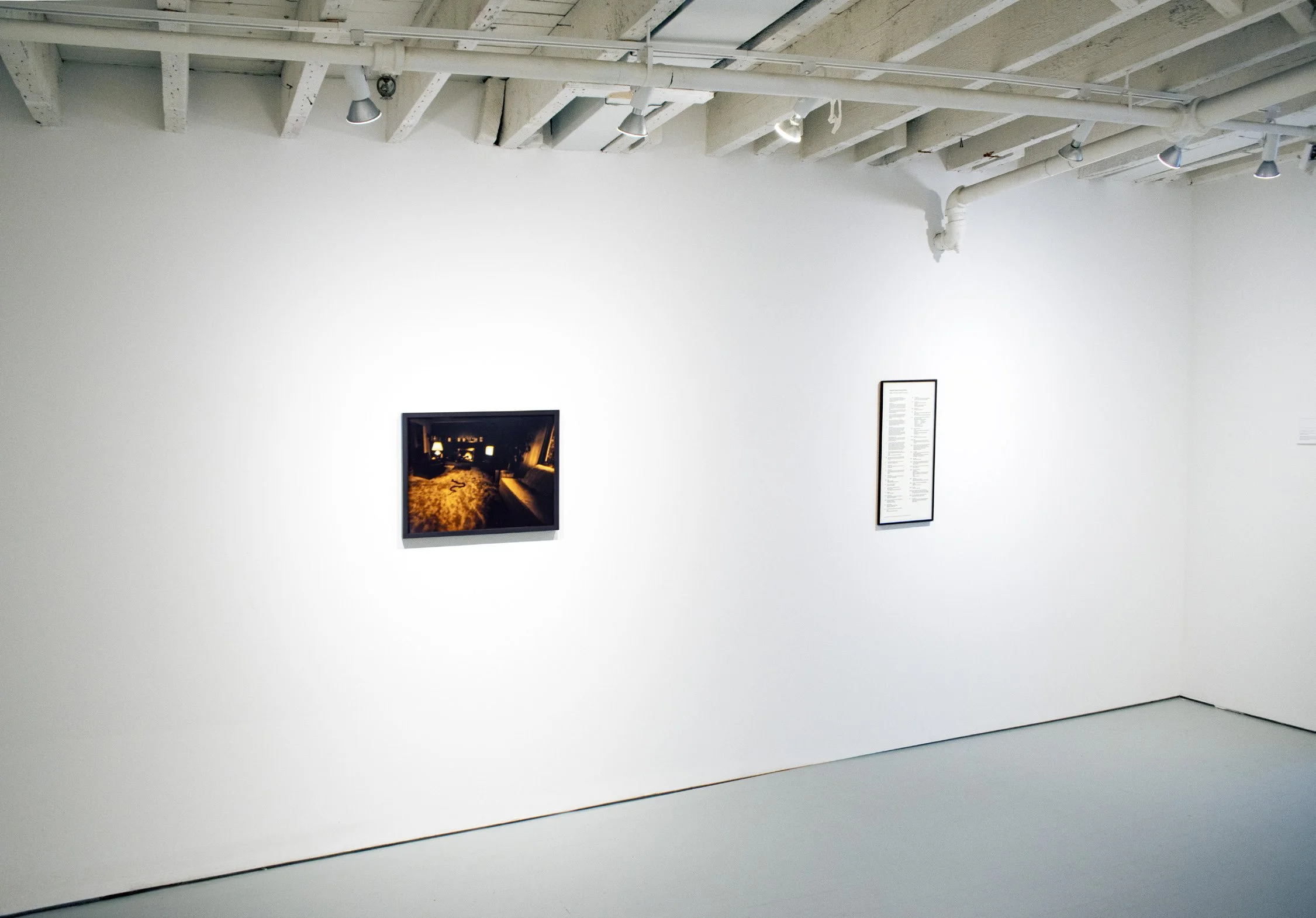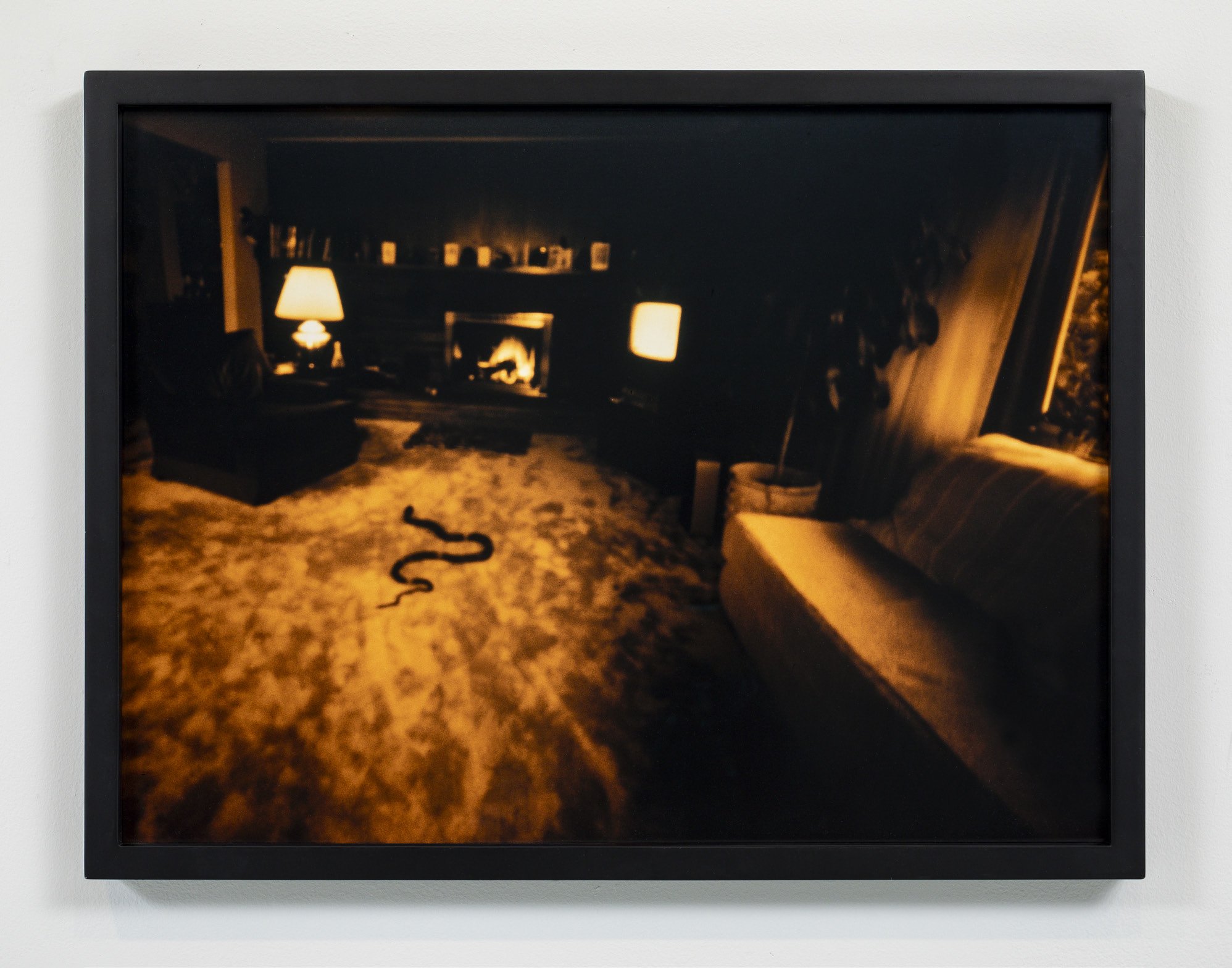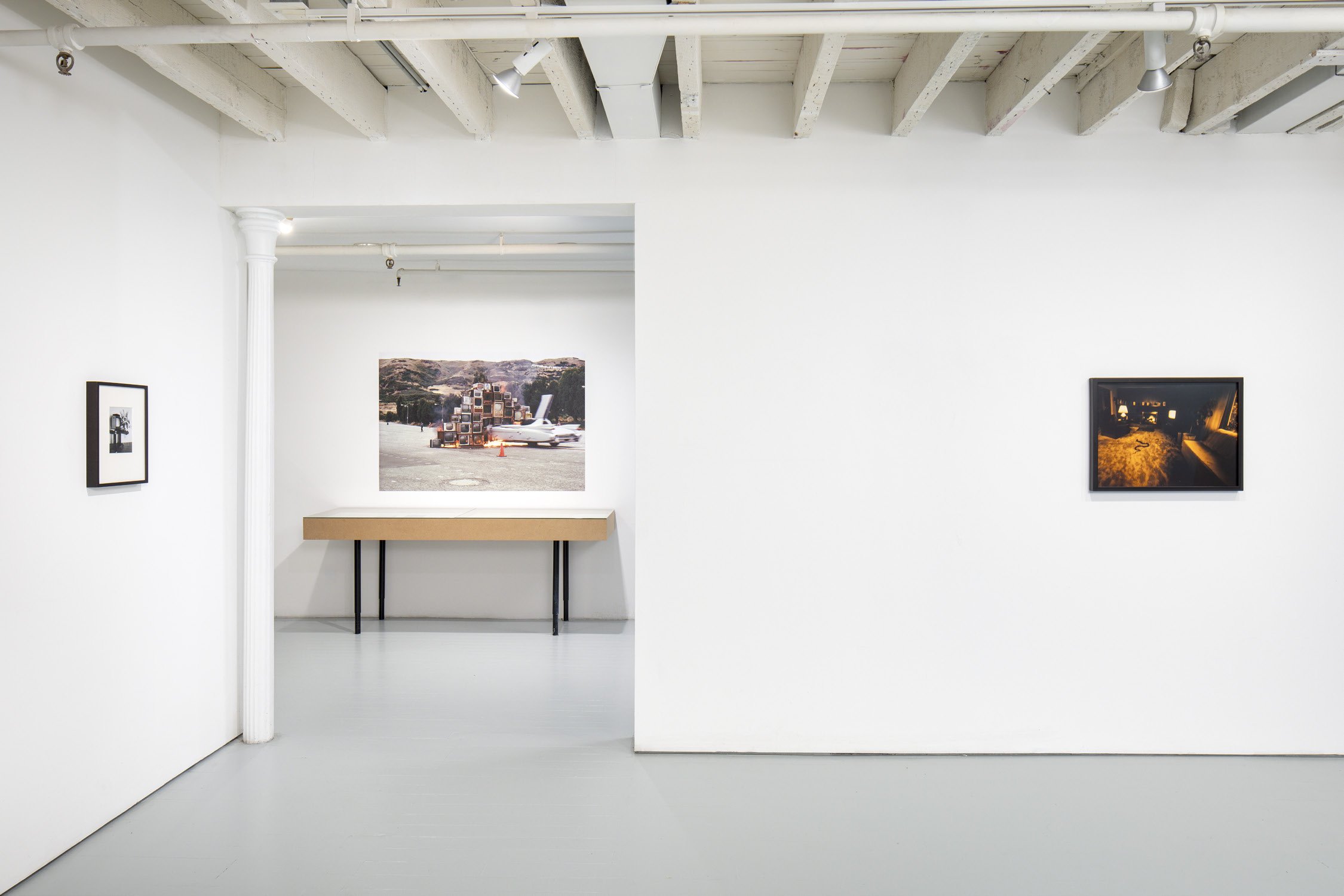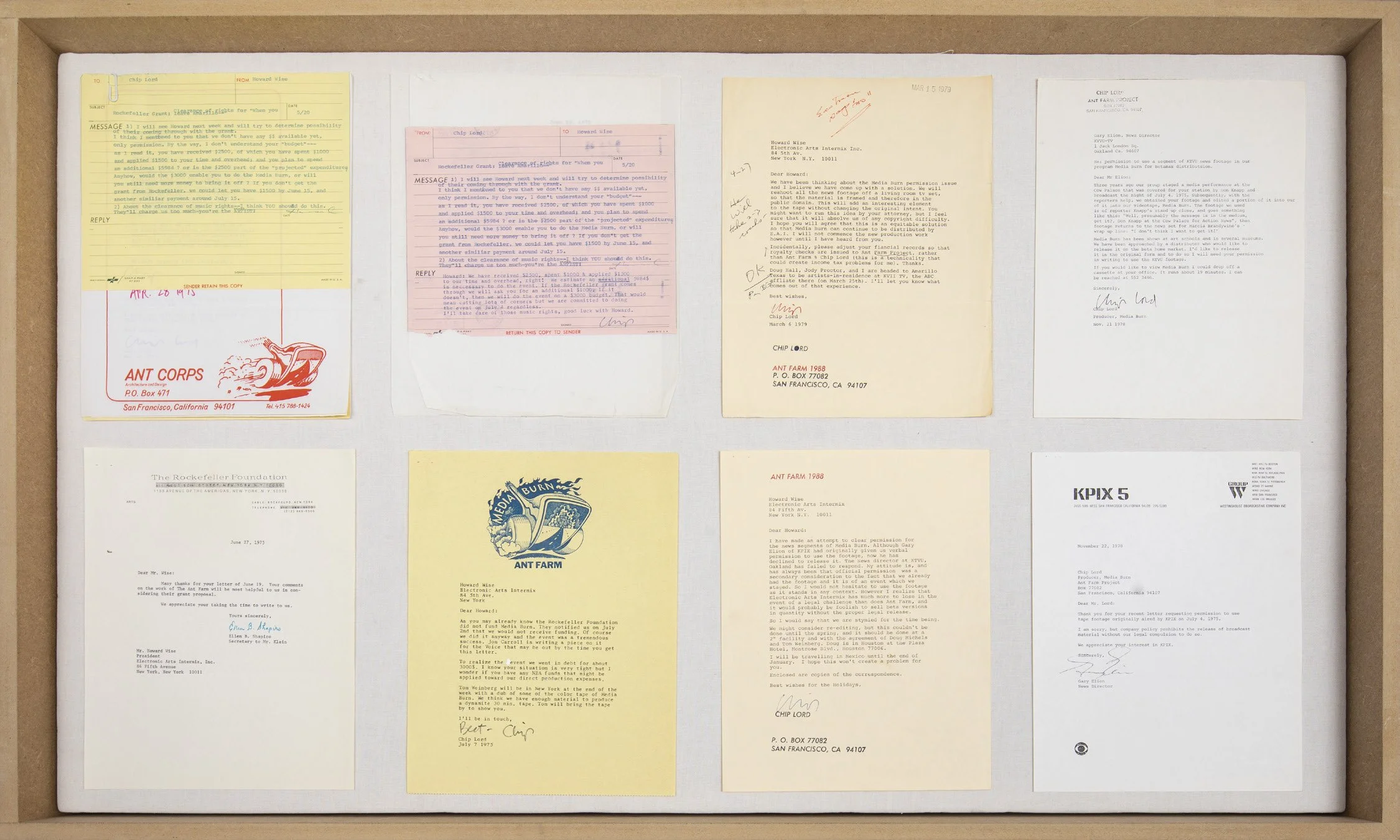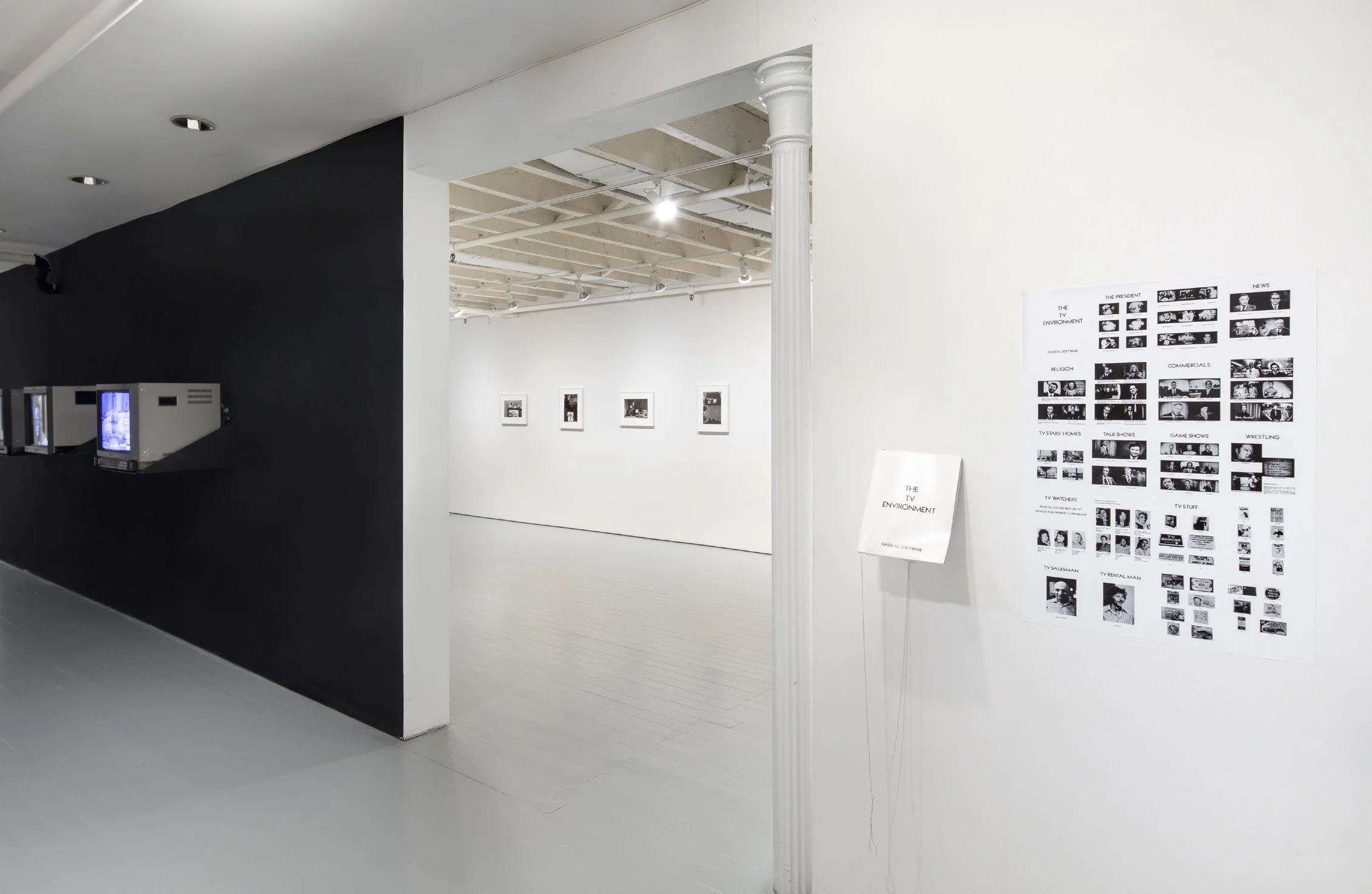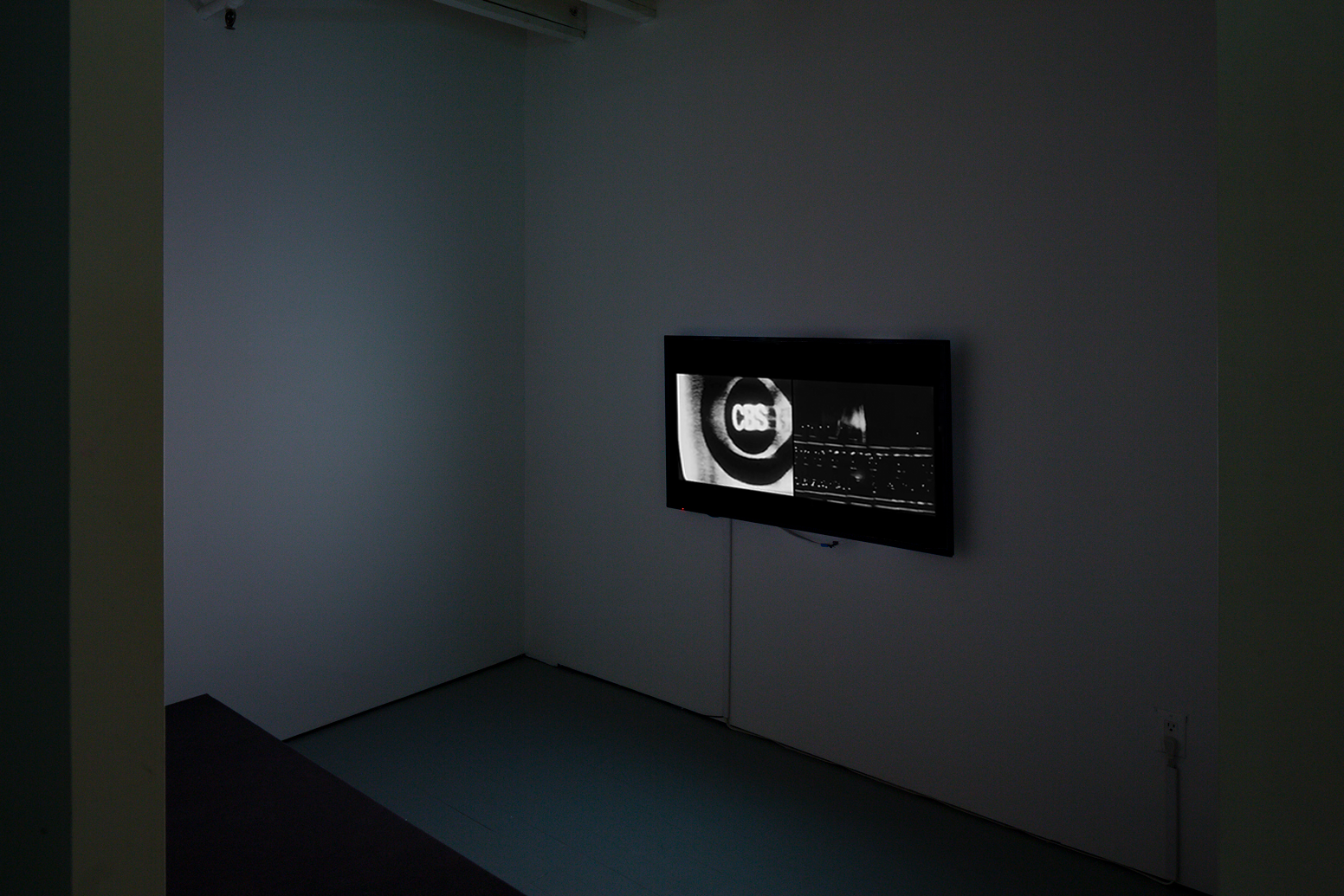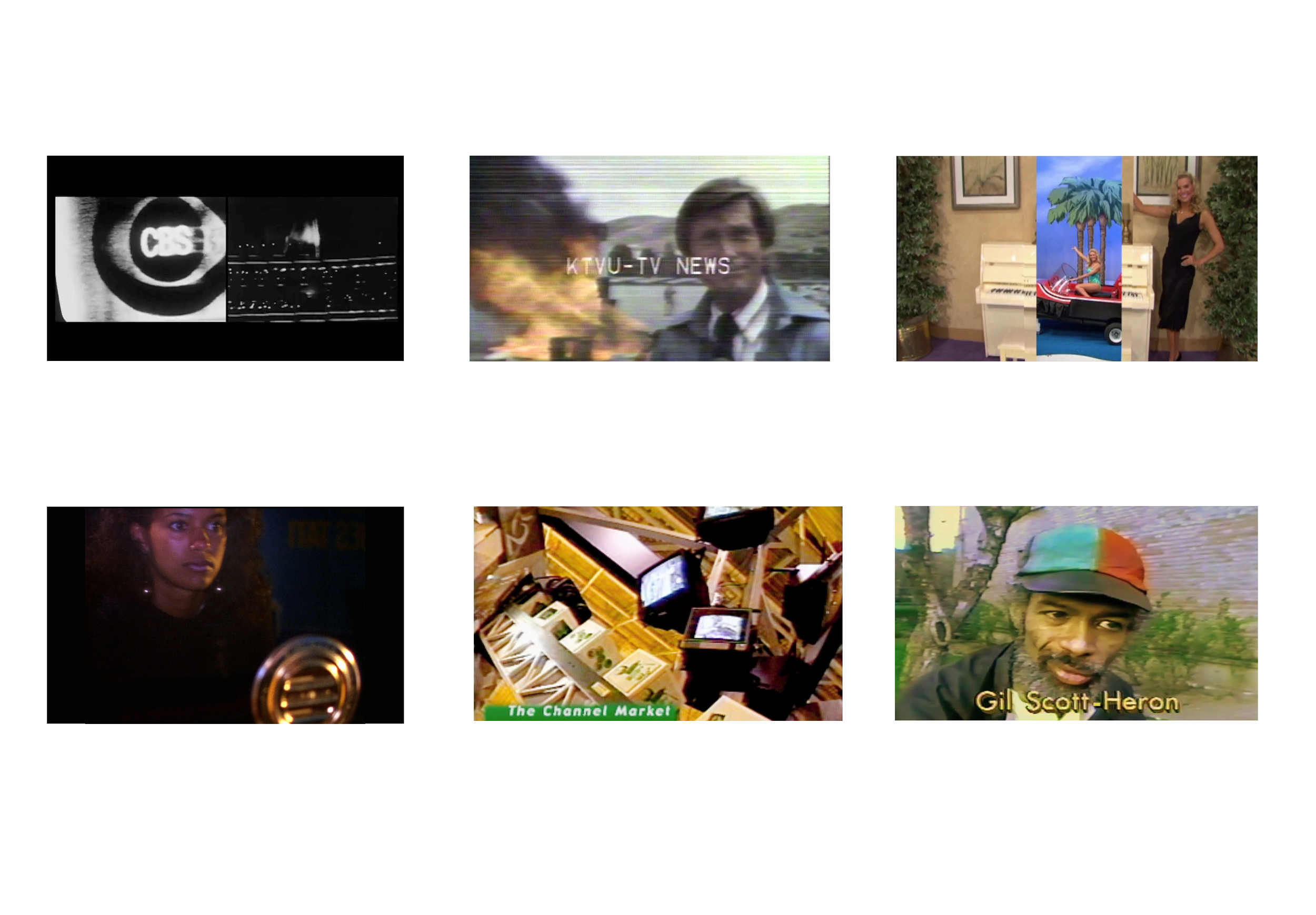On Television
Extended through January 26, 2025
Holiday Hours:
Closed: December 20, 2024 -January 8, 2025
Reopening: Thursday, January 9th, 2025
Ant Farm
Gretchen Bender
Skip Blumberg
Eli Coplan
Stan Douglas
Barbara Ess
Harun Farocki
Lee Friedlander
Takeshi Murata
Muntadas and Reese
Radical Software
Aldo Tambellini
Not Channel Zero
carriage trade
277 Grand Street, 2 Fl
New York, NY 10002
718-483-0815
Thursday - Sunday, 1-6 PM
You’re beginning to believe the illusions we’re spinning here. You’re beginning to think that the tube is reality, and that your own lives are unreal.
Howard Beale, Network, 1977
As the coming end of one era (broadcast television) gives way to another (the advent of artificial intelligence), On Television aims to investigate the continued power of the moving image to create alternate realities, captivating our attention while it reproduces and shapes our world. As the first mass-produced technology to send moving pictures directly into the home, TV quickly displaced the radio as the focal point of home entertainment across the American postwar landscape. Beaming corporate-sponsored narratives of success and optimism into our living rooms as part of a massive postwar consumer boom, the underlying message was clear, we helped win the war and all the bounty of the world was now at our disposal.
What began with live televised broadcasts collectively engaged in (at train stations, bars, and shop windows), eventually lent corporations access to a willing audience within millions of American homes. Hawking a cornucopia of new products and services within the discrete interiors of “suburban and urban boxes” proliferating across the country also produced in its wake what the artist Gordon Matta-Clark once referred to as the “passive, isolated consumer.”
Connecting viewers through the fun and frolic of game shows and comedy, the adrenaline rush of action films, the unscripted drama of sports, the “hard nosed” reporting of the news, and the reassuring sincerity of family drama, an underlying social hierarchy is regularly imposed through frequent corporate prescriptions for lifestyles and products to be envied then faithfully adhered to. With television’s efforts to shape reality eventually challenged by its greater technical capacity to record it, nightly broadcasts of the war in Vietnam and civil rights struggles at home posed challenges to upbeat, family based narratives, paving the way for more explicit ideological positioning among the networks to foster and maintain audience share. With the backlash against the tumult of the 60’s and 70’s fostering a schism of conservative and liberal leaning networks which continue to define our “polarized” world, “mass media” has now atomized across billions of individual platforms, collectively linked by a new, more casually dressed corporate elite, no less aware of the continued power of the image to captivate a subject’s attention as a means of influencing consumer behavior.
In returning to the origins of the first great disseminator of the moving image, easily located and defined within its rectangular housing, the goal of On Television is to reveal the continuity of mass media’s societal influence across ever shifting platforms, technologies, and devices, where “updates” in technology are not necessary accompanied by more progressive considerations of the public, and seductions of future technological promise can often mask the agendas of powerful interests whose influence might be presumed to be a thing of the past. Incorporating photography, film, video, and sculpture, the artwork in On Television employs humor, irony, critical distance, and direct engagement as a means of revealing the seductive power of the televised image and its profound effects in (re)shaping our world.
Carriage Trade would like to extend a special thanks to Rebecca Cleman at Electronic Arts Intermix for her invaluable assistance in realizing On Television, as well as all the artists and the following lenders for their loans of artwork for the exhibition: Pedro Barbosa, Antje Ehmann, The Aldo Tambellini Art Foundation, Fraenkel Gallery (San Francisco), Sprüth Magers Gallery (New York), David Zwirner Gallery (New York), Electronic Arts Intermix, Magenta Plains, and Third World Newsreel. We'd like to thank the Lower Manhattan Cultural Council (LMCC), New York State Council on the Arts (NYSCA), The PARC Foundation, Lawrence B. Benenson, Josephine Simon, and Mr. Jacques Louis Vidal for their vital support of our projects. Thanks also to Davidson Gigliotti and gallery assistants Seung Hee Kim, Ana León, Laura Li, Faith Piñon, and Yanzhen Shi for their invaluable efforts on this exhibition and the day-to-day operations of the gallery.
Photo: Lee Friedlander, Philadelphia, 1961, gelatin silver print. Courtesy of Fraenkel Gallery.
Gretchen Bender Left to right: TV Text & Image (OPEN THE DOOR), TV Text & Image (IMAGE OF DEAD), TV Text & Image (DREAM NATION), TV Text & Image (NO CRITICISM). ca. 1989, Live television broadcast, monitors, vinyl lettering, dimensions variable, Courtesy of Sprüth Magers Gallery (New York). On Television, Installation View, Carriage Trade, Photo: Nicholas Knight.
Installation View Installation View, Carriage Trade, Photo: Nicholas Knight.
Gretchen Bender TV Text & Image (OPEN THE DOOR), ca. 1989, Live television broadcast, monitors, vinyl lettering, dimensions variable, Courtesy of Sprüth Magers Gallery (New York).
Gretchen Bender TV Text & Image (DREAM NATION), ca. 1989, Live television broadcast, monitors, vinyl lettering, dimensions variable, Courtesy of Sprüth Magers Gallery (New York).
Not Channel Zero NCZ Goes to War, 1992, 30 min, color, sound, Courtesy of Third World Newsreel. On Television, Installation View, Carriage Trade, Photo: Nicholas Knight.
Not Channel Zero NCZ Goes to War, 1992, Video Still, 30 min, color, sound, Courtesy of Third World Newsreel.
Eli Coplan Landscape, 2022, polarizing filter, 23 1/2” x 41 1/2”, Courtesy of the artist and Pedro Barbosa.
Eli Coplan Landscape, 2022, polarizing filter, 23 1/2” x 41 1/2”, Courtesy of the artist and Pedro Barbosa.
Installation View On Television, Installation View, Carriage Trade, Photo: Nicholas Knight.
Installation View On Television, Installation View, Carriage Trade, Photo: Nicholas Knight.
Installation View On Television, Installation View, Carriage Trade, Photo: Nicholas Knight.
Lee Friedlander Aloha, Washington, 1967 / printed ca. 2000s, gelatin silver print, 8 5/8” x 12 7/8” (image), 14 1/2” x 18 1/2” (framed), Courtesy of Fraenkel Gallery (San Francisco).
Lee Friedlander Nashville, 1965 / printed 2006, gelatin silver print, 13 x 8 1/2” (image), 14 1/2” x 18 1/2” (framed), Courtesy of Fraenkel Gallery (San Francisco).
Lee Friedlander Philadelphia, 1961 / printed 2013, gelatin silver print, 8 1/4” x 12 1/2” (image), 14 1/2” x 18 1/2” (framed), Courtesy of Fraenkel Gallery (San Francisco).
Lee Friedlander Pennsylvania, 1969 / printed later, gelatin silver print, 12 7/8” x 8 5/8” (image), 14 1/2” x 18 1/2” (framed), Courtesy of Fraenkel Gallery (San Francisco).
Lee Friedlander Pennsylvania, 1969 / printed later, gelatin silver print, 12 7/8” x 8 5/8” (image), 14 1/2” x 18 1/2” (framed), Courtesy of Fraenkel Gallery (San Francisco).
Lee Friedlander New York State, 1965 / printed later, gelatin silver print, 12 5/8” x 8 3/8” (image), 14 1/2” 18 1/2” (framed), Courtesy of Fraenkel Gallery (San Francisco).
Installation View On Television, Installation View, Carriage Trade, Photo: Nicholas Knight.
Barbara Ess No title (snake in living room), Archival inkjet print, 2017, 18” x 24” (framed), Courtesy of Magenta Plains. On Television, Installation View, Carriage Trade, Photo: Nicholas Knight.
Installation View On Television, Installation View, Carriage Trade, Photo: Nicholas Knight.
Installation View On Television, Installation View, Carriage Trade, Photo: Nicholas Knight.
Installation View On Television, Installation View, Carriage Trade, Photo: Nicholas Knight.
Installation Detail Media Burn, 1975, photograph, matte vinyl, Image courtesy of Inventory Press & Chip Lord.
Installation View On Television, Installation View, Carriage Trade, Photo: Nicholas Knight.
Installation View On Television, Installation View, Carriage Trade, Photo: Nicholas Knight.
Installation View On Television, Installation View, Carriage Trade, Photo: Nicholas Knight.
Radical Software The Tv Environment [excerpt], Volume 2, by Billy Adler, John Margolies, Van Schley, Iline Segalove, 1973.
Installation View On Television, Installation View, Carriage Trade, Photo: Nicholas Knight.
Muntadas and Reese Political Advertisement X 1952–2020, 2020, Video Still, 98 min, color, stereo, HD video, Courtesy of the artists & Electronic Arts Intermix (EAI). On Television, Installation View, Carriage Trade, Photo: Nicholas Knight.
Harun Farocki A Day in the Life of a Consumer (Ein Tag im Leben der Endverbraucher), 1993, 43:48 min, color, sound, dialogues and credits in German, with subtitles in English; restored, High Definition 1920x1080 p, Pillarbox: ratio of the image 4:3 in frame 16:9, Courtesy of Antje Ehmann. On Television, Installation View, Carriage Trade, Photo: Nicholas Knight.
Harun Farocki A Day in the Life of a Consumer (Ein Tag im Leben der Endverbraucher), 1993, Video Still, 43:48 min, color, sound, dialogues and credits in German, with subtitles in English; restored, High Definition 1920x1080 p, Pillarbox: ratio of the image 4:3 in frame 16:9, Courtesy of Antje Ehmann.
Video Compilation (detail), Aldo Tambellini, BLACK TV, 1968, 9:33 min, black and white, sound, Courtesy of The Aldo Tambellini Art Foundation (Salem, MA)
Top Row (left to right): Aldo Tambellini, BLACK TV, 1968, 9:33 min, black and white, sound, Courtesy of The Aldo Tambellini Art Foundation (Salem, MA), Ant Farm: Chip Lord, Doug Michels, Curtis Schrier, Uncle Buddie, Media Burn, 1975, 23:02 min, color, sound, dimensions variable, Courtesy of Electronic Arts Intermix (EAI) & Chip Lord, Takeshi Murata, Infinite Doors, 2010, 2:00 min, color, sound, Courtesy of Electronic Arts Intermix (EAI)
Bottom Row (left to right): Stan Douglas, Television Spots, 1987-1988, 5:18 min, color, sound, overall dimensions variable, Courtesy the artist, Victoria Miro, and David Zwirner, Skip Blumberg, Gil Scott-Heron: Why Revolution won’t be Televised, 1991, 1:17 min, color, sound, Courtesy of the artist, Skip Blumberg, The Channel Market, 1996, 5:58 min, color, sound, Courtesy of the artist






